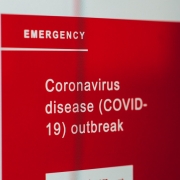Changes in Online Psychoactive Substance Trade via Telegram during the COVID-19 Pandemic
In this article, the authors present an evaluation of online psychoactive substance trade via Telegram, a free encrypted social media messenger service. The evaluation took place during the COVID-19 pandemic, which allowed the authors to monitor the effects of the spring 2020 lockdown in the Netherlands on substance trade via Telegram.
Objective
The objective of this study was to evaluate whether changes in psychoactive substance trade on Telegram markets in the Netherlands can be observed during the COVID-19 pandemic.
Results
Between December 2, 2019, and June 29, 2020, a total of 70,226 posts appeared in two analyzed Telegram groups. A total of 5,643 posts were psychoactive substance related. Based on the analyzed posts, Telegram is mostly a ‘“sellers” market as only a minority of the posts (6.3%) could be identified as a request for a substance. The proportion of posts related to specific substances varied between the periods before, during, and after the lockdown. The proportion of posts on the stimulants ecstasy, cocaine, and amphetamine was lower during the lockdown than before and after. For psychedelics − ketamine, lysergic acid diethylamide (LSD), and 2,5-dimethoxy-4-bromophenethylamine (2C-B) − and other substances, there was a relative increase in the number of posts during the lockdown, which was maintained after the lockdown.
Conclusions
Telegram analysis shows that in the Netherlands, online psychoactive substance trade may have been affected during the COVID-19 pandemic. The direction of this effect was different for different classes of substances.
Read the article in full AT THIS LINK.









